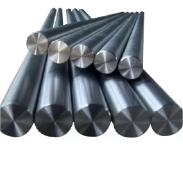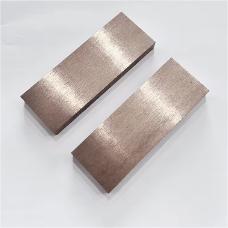**Burying Wires Deep: Your Escape from Metal Plates!**
(What Depth Does Electric Wire Need To Be In Wall To Not Use Metal Plates?)
Ever wonder why electricians seem obsessed with digging trenches inside your walls? It’s not just for fun. Getting that wire buried deep enough is a big deal. It’s the golden rule for avoiding those clunky metal protection plates. Let’s crack open the wall, metaphorically speaking, and see why depth matters so much.
**1. What Exactly is the Magic Depth to Skip Metal Plates?**
The number you need is simple: **1.5 inches**. That’s the magic measurement. Measure from the very front surface of the stud, joist, or rafter to the closest edge of your electrical cable. If your cable sits at least 1.5 inches deep into that wood framing, congratulations! You generally don’t need to add those metal protection plates. Think of it as building a natural shield. The wood itself becomes thick enough armor. This depth puts the cable safely out of reach of most nails or screws someone might drive into the wall later. Picture hanging a picture or installing shelves. Nails usually go in less than 1.5 inches. So, if your wire is deeper than that, it stays safe. This rule applies to standard wiring like NM cable (Romex) in walls, ceilings, and floors. It’s a fundamental safety buffer written into the electrical codes.
**2. Why Does This Specific Depth Keep Plates Off?**
The reason is all about penetration. Nails and screws used for typical construction tasks – hanging drywall, securing trim, putting up shelves – rarely penetrate deeper than 1.25 inches. Most are much shorter. The 1.5-inch rule creates a guaranteed safety margin. It builds in extra space. This margin accounts for slight variations in drilling or nailing. It also considers the wire might not be perfectly centered in the hole. The goal is foolproof protection. If the wire is shallow, say only half an inch deep, a standard nail easily reaches it. This could pierce the insulation. A pierced wire can cause a short circuit, sparks, or even a fire. Metal plates act as a physical barrier for shallow wires. They stop nails and screws before they hit the cable. But when the wire is buried deep enough, the wood itself provides that barrier effectively. The depth rule uses the structure of your house as the primary defense.
**3. How Do You Actually Achieve and Check This Depth?**
Getting it right requires good technique. First, you need the right tools. An electric drill and a sharp drill bit slightly larger than your cable diameter are essential. Measure carefully. Mark your drill bit at 1.5 inches from the tip using tape or a marker. This shows you the minimum depth to drill. Drill your hole straight and deep. Make sure you hit your mark. The hole needs to be deep enough so the cable sits entirely within it, not bulging out. After drilling, test the depth. You can use a small ruler or the marked drill bit itself. Insert it into the hole. Confirm it goes at least 1.5 inches deep before hitting the back. When pulling the cable through the hole, ensure it lies flat against the back of the hole. Don’t let it twist or ride high. Once the cable is pulled, double-check. Look at the hole from the side if possible. See if the cable edge is clearly set back from the front face of the stud. If you see any doubt, if the cable looks shallow, don’t guess. Add the metal plate. It’s cheap insurance. Always follow the electrical code for your area. When in doubt, consult a licensed electrician.
**4. Where Do You Apply This Deep Burial Rule?**
This rule pops up constantly in house wiring. Think about your walls. When wires run horizontally through studs between rooms, they need holes drilled at the right depth. Vertical runs up to outlets and switches? Same thing. The wires feeding those devices pass through studs. Ceiling lights and fans need power. Wires running through ceiling joists to reach them must be deep. Floor outlets or wiring feeding rooms below? Wires running through floor joists require the 1.5-inch depth. Anywhere framing lumber exists, and wires pass through it, this rule applies. It’s especially important near potential hazard zones. Areas where you know things will be attached to the wall later are key. Think behind baseboards, around door frames, near built-in cabinets, or along walls likely to hold TVs or heavy shelves. Anywhere someone might reasonably drive a fastener demands careful attention to depth. Remodels are critical too. When opening up walls, check existing wire depths. If they are shallow, adding plates is a must before closing up.
**5. FAQs: Clearing Up the Depth and Plate Confusion**
* **Is 1.5 inches the only rule?** Mostly, yes, for standard wood framing and NM cable. But check local codes. Sometimes near the edge of a stud or in special situations, different rules might apply. Metal studs often require plates regardless of depth.
* **What if my hole is slightly less than 1.5 inches?** Don’t risk it. If the measurement isn’t a clear 1.5 inches or more, install a metal protection plate. It’s quick and easy. Safety beats guessing every time.
* **Do plates harm the wire?** No. Properly installed plates are smooth. They simply cover the shallow wire section. They don’t pinch or damage the cable. Their job is to deflect nails and screws.
* **Can I use plastic plates instead of metal?** Sometimes. Specific plastic plates rated for nail/screw protection exist. But metal plates are the standard, most widely accepted solution. Always use products listed for this purpose.
* **Does depth matter for wires in conduit?** Wires inside conduit are generally protected by the conduit itself. The depth rules primarily apply to cables like Romex run directly through wood framing holes. Conduit has its own installation requirements.
* **What about wires running along the side of a stud?** Wires running along the face of a stud, not through a hole, almost always need protection. This usually means running them inside conduit or using metal plates if they are within 1.25 inches of the face. Depth rules mainly cover wires *inside* the drilled holes.
(What Depth Does Electric Wire Need To Be In Wall To Not Use Metal Plates?)
* **Is deeper than 1.5 inches better?** Deeper doesn’t hurt, but it’s usually unnecessary. The 1.5-inch rule provides proven safety. Drilling much deeper can weaken the stud unnecessarily. Stick to the code depth.
Inquiry us
if you want to want to know more, please feel free to contact us. (nanotrun@yahoo.com)


